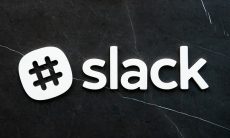In his thought-provoking podcast Revisionist History, renowned author and speaker Malcolm Gladwell investigates what he calls “the overlooked and the misunderstood.” In one of its most captivating episodes, “The Big Man Can’t Shoot,” Gladwell wonders why Wilt Chamberlain, one of the best basketball players of all time, decided to NOT fix one of the only flaws in his game—shooting free throws—even though he knew exactly the recipe to do it well. The only thing he had to do was to shoot underhanded—the so-called “granny shot.”
For a guy who had seasons making dismal 40% of his free throw shots, that simple change in his shooting technique would move him to the 60% mark. That adjustment hit its near-perfection in his famous 100-point game, where he shot incredible 87.5% from the charity strip. Despite all that success, he decided to stop doing it that way, and reversed back to the old form, even knowing it would cost him points and deprive his team from some wins. This is Wilt’s justification:
I felt silly…shooting underhanded. I know I was wrong. I know some of the best foul shooters in history shot that way. Even now, the best one in the NBA—Rick Barry—shoots underhanded. I just couldn’t do it.
In other words, he decided to shoot the basketball in a way he knew he was not good at not because of what he thought to be right, but because of what other people would think about the shot. You can almost hear the crowd boo in approval when he says that.
So why does this story matter? Well, what happened in the hardcourt more than 50 years ago still happens around us at the workplace every day, and we are often not aware of it.
If you have been around the IT heads of any traditional organization over the last few years, you certainly heard about their grandiose digital transformation plans and how they would position the enterprise to survive and thrive in this brave new world. That conversation probably involved some neat PowerPoint presentation with a few references to Uber, Airbnb, Google, and Amazon, along with the mandatory mentions of mobile, social, big data, and cloud. But what might not be obvious about “thought leadership” discourse is that as they execute their digital transformation plan, the results will start resembling their competitors’ plans.
Moving through the technology cycles as a herd is the way most IT departments cope with the fear of change. Large companies typically follow IT road maps as if they were stops in a single-line subway system, with announcements coming through: “You are in Mainframes station; next stop, Client-Server. Arriving at e-commerce.” Along the way, we had stops at the dot-com, SOA, and Web 2.0 stations. As we move down the route, we all approach the Digital and Machine Learning stops. Mimicking what everybody else is doing gives us that sense of security, that we are not ruining what currently works for us, and will take us to the last place we want to go: a commodified landscape where most people cannot tell the difference between you and your competitors.
I’m not saying that following the safest course of technological progress is wrong. The actual issue is following it blindly, conservatively, which makes all players in the same industry virtually indistinguishable from each other. To continue with the subway analogy: it’s almost as if all large cities in the world would end up with pretty much the same transit system, instead of looking for transportation infrastructure solutions that would address their specific issues and differentiate them from everybody else.
At the end of his podcast episode, Gladwell says:
I know we’ve really only been talking about basketball, which is just a game in the end. But the lesson here is much bigger than that. It takes courage to be good, social courage, to be honest with yourself, to do things the right way.
The same lesson applies to our digital transformation journeys: it takes analog courage to be digitally different and leave the herd behavior behind us.






